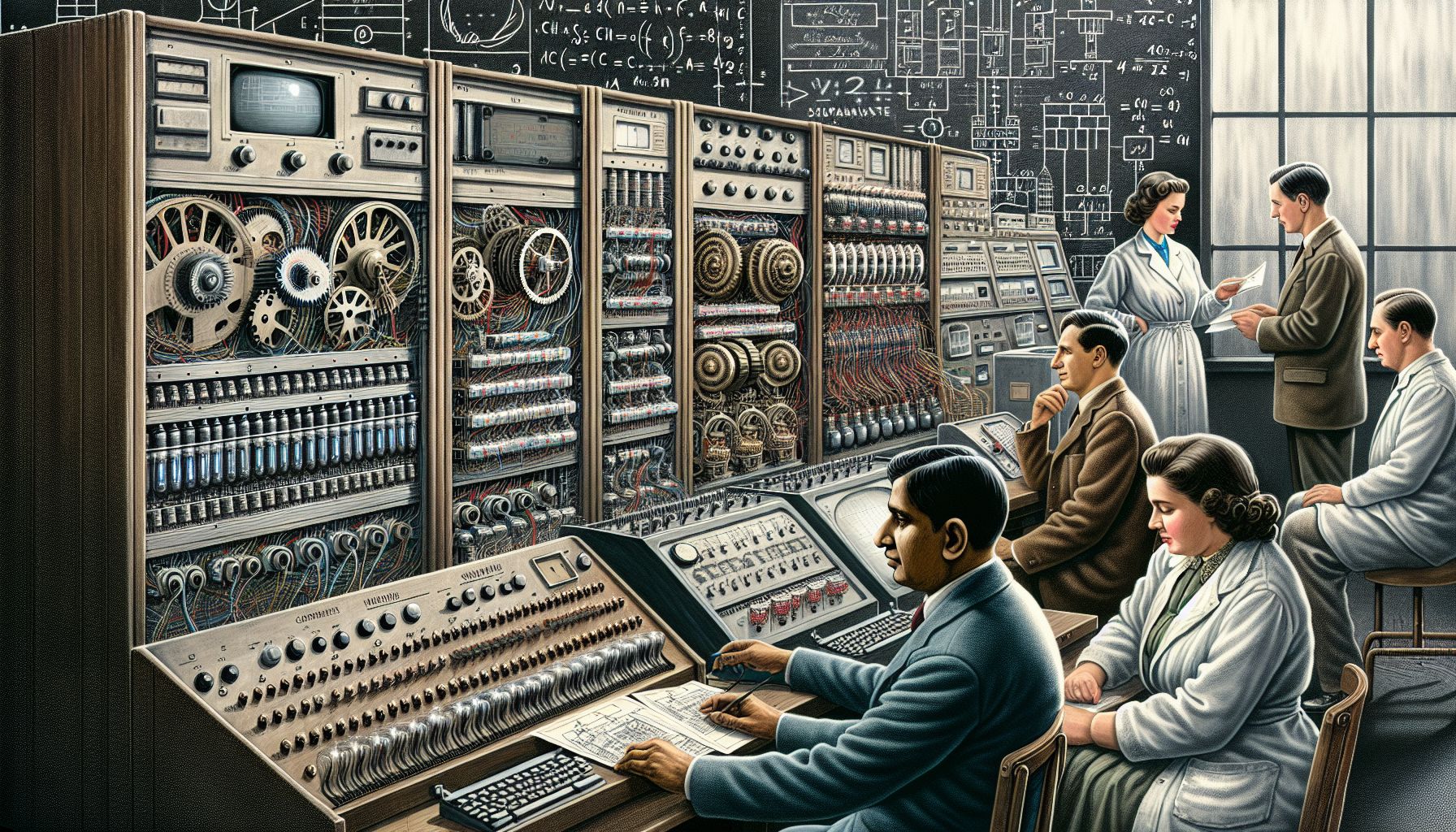📌 Let’s explore the topic in depth and see what insights we can uncover.
⚡ “Can you imagine a world without the comfort of your laptop, smartphone, or even a calculator? Let’s time travel back to the creation of the first computer - a machine so large, it could’ve filled your entire living room!”
From the humble beginnings of mechanical calculators to the sophisticated supercomputers we use today, the evolution of computers has been nothing short of remarkable. These powerful machines have revolutionized every aspect of our lives, from the way we work and communicate to how we entertain ourselves and even how we perceive the world. But do you ever pause and wonder about the origins of these miraculous devices? Let’s journey back in time to the mid-20th century, a time of great scientific and technological innovation, to take a closer look at the first-ever computer. Get ready to marvel at the ingenuity and determination that led to the birth of this transformative technology.
💾 ENIAC: The Granddaddy of Modern Computers

"Decoding History: The Dawn of Computer Technology"
The Electronic Numerical Integrator and Computer (ENIAC), developed during the World War II era, holds the prestigious title of being the first general-purpose electronic computer. This colossal machine, filled with vacuum tubes and relays, was a far cry from the sleek, portable devices we’re accustomed to today.
📚 The Birth of ENIAC
ENIAC was the brainchild of John W. Mauchly and J. Presper Eckert at the University of Pennsylvania. The project, funded by the United States Army during World War II, aimed to create a machine that could quickly compute artillery firing tables, which were crucial for the war effort. The construction of ENIAC began in 1943 and was completed in 1945. The machine was monstrous in size, occupying a room of 30 by 50 feet and weighing almost 30 tons!
🛠️ ENIAC’s Architecture and Capabilities
ENIAC was built using over 17,000 vacuum tubes, 7,000 crystal diodes, 1,500 relays, 70,000 resistors, 10,000 capacitors, and around 5 million hand-soldered joints. The machine could perform 5,000 additions, 357 multiplications, or 38 divisions in a single second. While these numbers may seem modest by today’s standards, they were absolutely groundbreaking at the time. However, programming ENIAC was no easy task. It required physically resetting a maze of switches and cables. Despite its challenges, ENIAC served as a crucial stepping stone in the evolution of computer programming and architecture.
📈 The Influence of ENIAC
From punch cards to binary code, ENIAC’s impact on the computing world is immeasurable. While it may seem primitive compared to the hyper-connected, AI-powered devices of today, without ENIAC, our digital landscape could look very different.
🖥️ The Birth of Programming
Programming, as we know it today, owes a lot to ENIAC. The complex process of manually setting up the machine for each new problem laid the groundwork for the development of stored-program computers. These machines could store instructions in their memory, significantly simplifying the process of programming.
💡 Sparking a Technological Revolution
The success of ENIAC ignited a technological revolution. It paved the way for the development of more advanced computers like the UNIVAC (Universal Automatic Computer), which was also designed by Mauchly and Eckert. UNIVAC marked another significant milestone as it was the first computer made commercially available, bringing computing technology to the hands of businesses and institutions. ENIAC also inspired the creation of the von Neumann architecture, a foundational concept for modern computing. Proposed by John von Neumann, a consultant on the ENIAC project, this architecture proposed storing both data and instructions inside the computer’s memory, a concept still in use in today’s computers.
🎯 The Legacy of ENIAC
ENIAC’s influence extends beyond the realm of technology. It has left an indelible mark on our society, culture, and everyday lives. From its influence on scientific research, business operations, and even popular culture, ENIAC’s legacy is far-reaching.
🚀 Fueling Scientific Advancements
ENIAC played a pivotal role in scientific advancements, particularly in the field of nuclear research. It was used to perform calculations for the hydrogen bomb, contributing to one of the most significant scientific developments of the 20th century.
🏦 Transforming Business Operations
ENIAC’s descendants, the mainframe computers, revolutionized business operations. They were used in banks, insurance companies, and government agencies, automating tasks and improving efficiency. This marked the beginning of the era of digital business operations.
🎞️ Influencing Popular Culture
ENIAC has also made its mark on popular culture. The giant machine has been featured in numerous films, TV shows, and books, often symbolizing the dawn of the digital age. It has even inspired the names of rock bands and software companies!
🧭 Conclusion
The story of ENIAC is not just the tale of a machine; it’s the saga of human ingenuity, perseverance, and the unquenchable thirst for knowledge. ENIAC was the first of its kind, a marvel of its time, and its creation marked the beginning of a digital revolution that continues to transform our world in unimaginable ways. As we navigate our way through the complexities of AI, quantum computing, and beyond, it’s important to remember and appreciate the roots of our digital journey. The ENIAC was not just a machine; it was a spark that ignited a technological revolution, a revolution that continues to burn brightly in the heart of our digital age. So here’s to ENIAC, the granddaddy of all computers, and to the brilliant minds who brought it to life! 🥂
🤖 Stay tuned as we decode the future of innovation!
